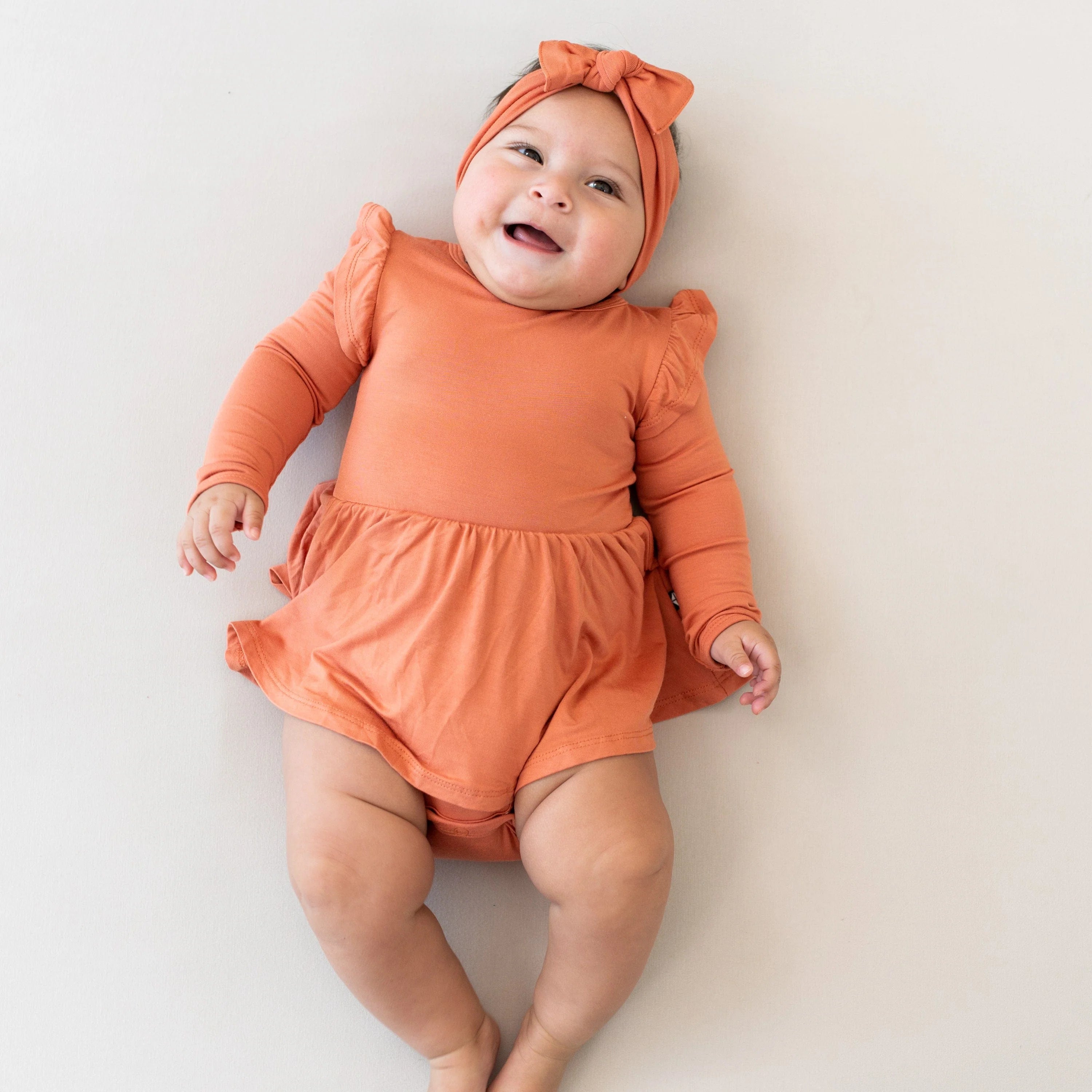
Is there a best side for your baby to sleep on? Should they sleep on their belly? What does the research say? How’s a parent to know what’s right?!
Don’t worry, I got you! This blog will show you everything you need to know about sleep positions for your baby.
Let’s cover:
- what side should a newborn sleep on
- can we put baby to sleep on side
- what side is best for baby to sleep on
- Why is back sleep the best
- What about acid reflux
- The newborn curl
what side should a newborn sleep on
The side a newborn should sleep on IS NOT a side! It’s their back. The AAP recommends placing a baby down on their back from day 1 for the entire first year.
While it may seem less dangerous to put them down on their side instead of their stomach, it can still put babies in a vulnerable position and they could easily roll to their belly before they have the motor skills or strength to protect their airway while on their belly.

Studies have found that the side sleep position is unstable and increases the chance that infants will roll onto their stomachs.
Some other problems that side sleeping can lead to are:
- Plagiocephaly (flat head/flat spots on their head) is common. According to Healthline, “A baby’s skull bones don’t fully fuse and harden until several months after birth. Soft, pliable bones allow for easier passage through the birth canal and gives a baby’s brain ample room to grow.The soft bones also mean that a baby’s head can change shape. One common cause for flat head syndrome is regularly sleeping or lying in the same position.”Yes, this is a cosmetic issue more than anything, however it can also lead to other issues like chronic ear infections because it can make the canals smaller and harder to drain fluid from.
Can back sleeping also cause plagiocephaly? Yes, absolutely. Positional plagiocephaly results from an infant being placed in the same position (usually on the back) for long periods of time.
Many cases of positional plagiocephaly can be prevented (and sometimes corrected) by repositioning, which relieves pressure from the back of an infant’s head.
Techniques for repositioning include:
- Alternating the baby’s head position when he or she is placed to sleep so that the baby is not always sleeping on the same side of the head
- Changing the direction the baby faces in the crib every week or so (feet at one end of the crib one week, at the other end of the crib the next week)
- Periodically moving the crib around the room so the infant has to turn his or her head in different directions to see what is going on
- Getting “cuddle time” with the baby by holding him or her upright over one shoulder often during the day
- Limiting the amount of time the baby spends in car seats, carriers, swings, and bouncy seats In addition, getting ample supervised Tummy Time is also important for reducing the likelihood of positional plagiocephaly.
Positional plagiocephaly is very different from craniosynostosis (premature fusion of the sutures of the skull), congenital muscular torticollis (twisted neck present at birth), and other types of plagiocephaly. These other types of plagiocephaly often require special molding helmets or surgery to correct.
- Choking: side sleeping can cause aspiration or choking on any regurgitated fluids just like back sleeping because anatomically speaking, the position of the trachea is compromised where fluid can pool in that area.
- Torticollis: this is a head tilt caused by a tight sternocleidomastoid muscle (SCM). This large, rope-like muscle runs on both sides of the neck from the back of the ears to the collarbone. Extra pressure on one side of the SCM can make it tighten, which makes it hard for a baby to turn his or her neck.Sleeping on one side can allow for the muscle to shorten and cause a baby to have difficulty with full head/neck range of motion.
So you may not be able to alternate sides your baby sleeps on but you can position them in different ways in their crib to allow for equal pressure on different parts of their skull to help lessen or prevent plagiocephaly.

can we put baby to sleep on side
If you’re holding your baby to sleep, you can definitely hold them on their side in a cradle position while they’re falling asleep. You can continue that while holding them (while you’re awake).
If you have to put your baby down, it’s best to put them down on their back. Some tips to help the transfer:
- If they’re still able to be swaddled (not showing any signs of rolling), then keeping them swaddled before transferring can help decrease the risk of the Moro reflex from waking them
- Try to hold them until they’re in a deeper sleep (usually after 15-20 minutes or so)
- Place them down on their side and gently roll them to their back
- Keep your hand on them and slowly release to help the adjustment to lying down/outside of your arms
what side is best for baby to sleep on
Once a baby can roll themselves from front to back/back to front, they can also choose to sleep on their side. You shouldn’t use any device that restricts them from being able to get into their chosen position of comfort and once they have the motor skills to do so, you do not have to roll them while they’re asleep!
The study linked above about baby sleeping on side during early infancy, shows it is unusual for a baby who is placed in the back sleep position to roll onto his or her stomach.
However, once infants are more developmentally advanced, they often roll over on their own. In this situation, when infants roll over on their own, there is no evidence that they need to be re positioned to reduce the risk of SIDS.
It is most important that the infant is placed to sleep in the back sleep position for every sleep time. Keeping the sleep area clear of soft or loose bedding also increases safety for the infant if he or she rolls onto the stomach.
What about 6 month-old sleeping on stomach or baby sleeping on tummy at 7 months? You can rest assured that they are safe to sleep in whatever position they get themselves into as long as their sleep space is safe (empty) of anything they could get wrapped up in or would compromise their airway.

Why is back sleep the best
In the 1970’s and 80’s, stomach sleeping was highly encouraged by doctors as they thought this would prevent babies from choking in their sleep. Unfortunately, this is when cot death (also known as SIDS) rose rapidly.
In 1992, the American Academy of Pediatrics recommended that all babies be placed on their back to sleep for the first year in order to reduce the risk of Sudden Infant Death Syndrome (SIDS).
The recommendations seem to have worked because SIDS deaths have decreased from 130.1 cases per 100,000 live births in 1990 to 39.4 in 2015.
SIDS is still the leading cause of death in babies one month to one year of age, so it is important to understand the research and recommendations behind safe sleep or placing babies on their back to sleep.
There is a ton of research and information in this blog about helping babies sleep safely.
What about acid reflux
There is no evidence that aspiration is more common among healthy infants who sleep in the supine position than among healthy infants who sleep in the prone position.
Furthermore, in countries (including the United States) that have seen a major change in infant sleep position—from mainly stomach sleeping to mostly back sleeping—the incidence of serious or fatal choking has not increased.
In fact, babies may actually clear secretions better when placed on their backs. When babies are in the back sleep position, the trachea lies on top of the esophagus.
Anything regurgitated or refluxed from the esophagus must work against gravity to be aspirated into the trachea. Conversely, when an infant is in the stomach sleep position, anything regurgitated or refluxed will pool at the opening of the trachea, making it easier for the infant to aspirate.
Also, chemosensitive tissue that initiates the reflex is more prominent on the posterior versus anterior pharyngeal wall, thus suggesting an even greater protection against aspiration when the baby is lying on his or her back.
Of the very few reported cases of death due to choking, most of the infants were in the stomach sleep position.
This website has a very good animation showing that back sleeping is still the safest position!

The newborn curl
Some babies will roll onto their side within days of being born. This is natural and referred to as a “newborn curl.” They have spent months curled up in your womb, so it is a position of comfort for your little one.
Most babies will lose that ability within the first month.
By 4 months of age, most babies have developed sufficient strength to use their arms in order to propel themselves up and over from their stomach onto their back.
The American Academy of Pediatrics (AAP) says that by 7 months old, most babies have mastered the art of rolling over.
At first, this movement may not be intentional as the weight of their head leads them over onto their back. But as they discover cause and effect, they will be on the move in no time!
There is a range, of course, for developing this intentional skill. Some babies will be able to perform the mini arm push up early on (as early as 1 month, 2 months or 3 months) and others may take up to 6 or 7 months to figure out or master rolling.
It is important to note that this skill may happen rather unexpectedly! Therefore, try to not leave your baby unattended on beds, couches, changing tables, etc as they could end up on the floor!
Do not be surprised if your little one begins to roll consistently and then does not roll again for a while. It is normal for the skill to “come and go” as it integrates into their repertoire.
Author Bio: Ashley Olson is a certified pediatric sleep consultant, owner of Heaven Sent Sleep and The Collective for Family Rest and Wellness, and passionate about helping new parents, experienced parents, desperate and sleep-deprived parents form healthy sleep habits for their children.
She has over 4 years of experience in working with families and has completed over 150 hours of coursework plus continuing education related to infant and toddler sleep. The focus of her work is on fostering a routine that grows your bond with your child while improving their sleep habits. She specializes in custom sleep plans and one on one support in changing sleep practices!














